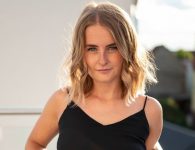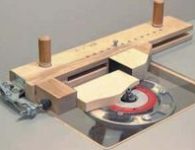

Tesla CEO Elon Musk attends an opening ceremony for Tesla China-made Model Y program in Shanghai, east China, Jan. 7, 2020
Xinhua/Ding Ting via Getty Images
On Tuesday afternoon, Tesla CEO Elon Musk answered questions from investors following the publication of the company’s latest quarterly results. The headlines news is that it has picked Texas as the site for its next factory. When asked how many cars this new car plant could build, Musk told the call that “long term—a lot,” with a chuckle.
Musk refused to be drawn on specifics about any new Tesla EVs beyond the ones we already know about. “It’s reasonable to assume we’d make a compact vehicle… at some point,” he said, before pointing out that the company has a long way to go with the Models 3 and Y.
The biggest asset value increase in history
Musk still believes that the introduction of a completely autonomous driving system will be a game changer for Tesla, and predicted that it would result in a five-fold increase in the value of a car thanks to much higher utilization. With regards to that program, the “major milestone is the transition of the autonomy system—or the car’s AI—from thinking in like 2.5D, doing image recognition, partially correlated in time, to 4D. What we’ve been doing this far is really mostly 2D and not well correlated in time. It’s hard to convey just how much better a fully 4D system would work,” Musk said.
This architectural change has not been rolled out to the customer cars yet, but Musk predicted that would happen later this year. “Then it will be a long march of nines,” he said, referring to the quest to improve the safety margin from (for example) 99.999 percent to 99.999999 percent. “How much better than humans does it need to be,” he asked, adding that “each order of magnitude is very expensive.” Musk then said we should be concerned about the direction that AI research was heading, and that “smart people can’t imagine a computer being way smarter than them.”
By the time Tesla’s robotaxi service will be available, commercial insurance coverage will be provided by Tesla.
Building cars more efficiently
Tesla is getting “way better” at making cars, Musk said when asked about the “alien dreadnaught.” However, he noted that there is “10,000 percent more engineering required to build a factory than the product itself.” Production in Shanghai is more efficient than in the US, a trend that would accelerate with the company’s third factory in Germany. Getting there will require making cars that might look the same as ones made in the US or China, but Musk said they would be very different under the skin to ease production. “The architecture of Model Y built in Berlin will be fundamentally different,” he revealed.
Other redesigns to existing vehicles might come about because of Tesla’s experiment as an insurer. Citing the high costs of crash repair, he said that in the future “we can adjust the design of the car and how the repair is done.” (Other insurance tidbits included a future car UX that could warn drivers not to speed unless they wanted their premium to increase, and the fact that Tesla wants to hire “high-energy actuaries, revolutionary actuaries”.)
Current supply chain efficiency—or lack thereof—was also raised when Musk was asked about current demand for Tesla’s EVs. “Costs were related to having to use airplanes to get parts around,” he said, and said that near term improvements include changes to the casting for Model Y rear body at the Californian factory, moving from two pieces to a single piece. “Demand exceeds supply right now,” Musk said.
Making each factory more efficient requires sourcing more components locally. At the Shanghai Gigafactory he said that local content has been rising 5 to 10 percent a month and “should be 80 percent by the end of the year.” And the Berlin Gigafactory is well located—”a ton of our suppliers are within a few hundred km of the factory,” he said. Additionally, battery cells for Berlin will be produced locally. Finally, Musk had some thoughts for European law makers. “Labor mobility in Europe is low, I would recommend changing it. Somebody wants to leave and join another company—they have to spend six months doing nothing, that’s called gardening leave,” he said.
Iron phosphate vs. nickel-based cells?
Some of the most interesting information on the call followed a question about the Tesla Semi. Production for this heavy duty battery EV is still slated for this year, and Tesla will use the first production Semis internally to shuttle batteries from the Nevada Gigafactory to its car plant in Fremont, California. And in order to have enough energy-dense cells for the Semi (and other vehicles), Tesla will switch to using cheaper iron-phosphate cell chemistry in Chinese-made vehicles.
“It’s very important to have mass-efficient and long range pack” for the Semi, Musk said. “What we’re seeing with passenger vehicles, our total vehicle efficiency has gotten good enough that we’re comfortable having an iron phosphate battery pack [in Chinese Model 3s]”, he said. Indeed, no other company can currently match Tesla when it comes to the efficiency of electric powertrains. The Chinese chemistry change will happen in 2020, and Musk predicted that those vehicles would have a range of “almost 300 miles… The new normal for range in US EPA terms [for a new BEV] will be approximately 300 miles—call it 500km, roughly,” he said.
Musk called for more raw materials for battery production. “Any mining companies out there, please mine more nickel,” he asked enthusiastically, adding that it has to be mined efficiently and in an environmentally sensitive way. “New normal for range in US EPA terms will be approximately 300 miles—call it 500km, roughly”
Tesla’s future
Long-term, Tesla energy will be the same size as the auto business, Musk predicted. “The mission of Tesla is to promote sustainable energy. Battery and solar will both be enormous, and they need to be for us to have a sustainable future. The real limitation on Telsa’s growth is cell production at an affordable price,” he said, calling that the company’s “fundamental scaling constraint.”
Lithium-ion batteries are already cheaper
than they’ve ever been, but still remain high enough that 300-mile BEVs remain more expensive to produce than their conventionally powered cousins.
“Anywhere from mining to refining to cathode and anode formation, cell formation—whatever the term for it is, that will set the growth rate. We expect to expand business with CATL and LG—there’s a lot more to say on Battery Day,” he said, referring to an event Tesla is holding in mid-September.
Musk was asked about the trade off between profitability versus making cars more affordable to drive EV adoption. “We can go beyond industry margins and still have the car affordable to almost everyone,” he said. “There’s value for money, and then there’s affordability. If people don’t have enough money in their bank account then you have this awesome thing no one can buy,” he explained, adding that “our cars are not affordable enough, we need to fix that. We are making progress in that regard. We need to not go bankrupt, obviously, but we’re not trying to be too profitable. One or two percent, it’s not too crazy. Slightly profitable and maximize growth, making the cars as affordable as possible,” Musk said.
read more at https://arstechnica.com by Jonathan M. Gitlin
Tech









